This article concerns the period 69 BC – 60 BC.
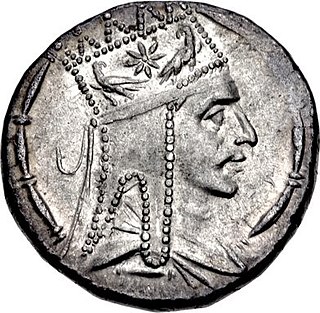
Tigranes II, more commonly known as Tigranes the Great, was a king of Armenia. A member of the Artaxiad dynasty, he ruled from 95 BC to 55 BC. Under his reign, the Armenian kingdom expanded beyond its traditional boundaries and reached its peak, allowing Tigranes to claim the title Great King or King of Kings. His empire for a short time was the most powerful state to the east of the Roman Republic.
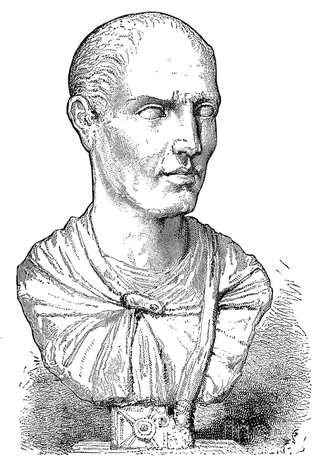
Lucius Licinius Lucullus was a Roman general and statesman, closely connected with Lucius Cornelius Sulla. In culmination of over 20 years of almost continuous military and government service, he conquered the eastern kingdoms in the course of the Third Mithridatic War, exhibiting extraordinary generalship in diverse situations, most famously during the Siege of Cyzicus in 73–72 BC, and at the Battle of Tigranocerta in Armenian Arzanene in 69 BC. His command style received unusually favourable attention from ancient military experts, and his campaigns appear to have been studied as examples of skillful generalship.

The Mithridatic Wars were three conflicts fought by Rome against the Kingdom of Pontus and its allies between 88 BC and 63 BC. They are named after Mithridates VI, the King of Pontus during the course of the wars who initiated the hostilities after annexing the Roman province of Asia into its Pontic Empire and committing massacres against the Roman inhabitants there. Mithridates was able to organise revolts against advancing Roman troops and play off the political factions of the optimates and populares against one another in the Roman civil wars. Nevertheless, the first war ended with a Roman victory, confirmed by the Treaty of Dardanos signed by Sulla and Mithridates. Greece was restored to Roman rule and Pontus was expected to restore the status quo ante bellum in Asia Minor.
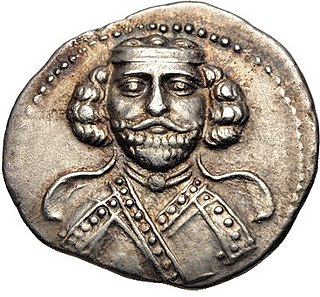
Phraates III, was King of Kings of the Parthian Empire from 69 BC to 57 BC. He was the son and successor of Sinatruces.

The Battle of Tigranocerta was fought on 6 October 69 BC between the forces of the Roman Republic and the army of the Kingdom of Armenia led by King Tigranes the Great. The Roman force, led by Consul Lucius Licinius Lucullus, defeated Tigranes, and as a result, captured Tigranes' capital city of Tigranocerta.

The Third Mithridatic War, the last and longest of the three Mithridatic Wars, was fought between Mithridates VI of Pontus and the Roman Republic. Both sides were joined by a great number of allies dragging the entire east of the Mediterranean and large parts of Asia into the war. The conflict ended in defeat for Mithridates; it ended the Pontic Kingdom and the Seleucid Empire, and also resulted in the Kingdom of Armenia becoming an allied client state of Rome.
The Battle of the Lycus was fought in 66 BC between a Roman Republican army under the command of Gnaeus Pompeius and the forces of Mithridates VI of Pontus. The Romans easily won the battle with few losses. Mithridates fled to Crimea and committed suicide in 63 BC, finally ending the Third Mithridatic War.
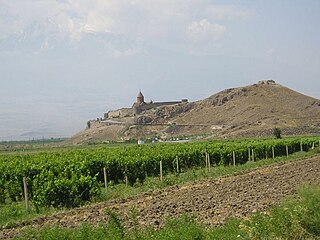
The Battle of Artaxata was fought near the Arsanias River in 68 BC between an army of the Roman Republic and the army of the Kingdom of Armenia. The Romans were led by proconsul Lucius Licinius Lucullus, while the Armenians were led by Tigranes II of Armenia, who was sheltering Mithridates VI of Pontus. The battle was part of the Third Mithridatic War, and was a Roman victory.
The Battle of Cabira was fought in 72 or 71 BC between forces of the Roman Republic under proconsul Lucius Licinius Lucullus and those of the Kingdom of Pontus under Mithridates the Great. It was a decisive Roman victory.
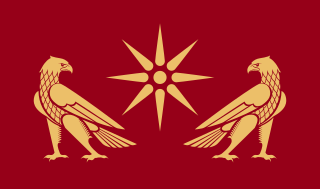
The Artaxiad dynasty ruled the Kingdom of Armenia from 189 BC until their overthrow by the Romans in 12 AD. Their realm included Greater Armenia, Sophene and intermittently Lesser Armenia and parts of Mesopotamia. Their main enemies were the Romans, the Seleucids and the Parthians, against whom the Armenians conducted multiple wars.

The Parthian Empire, also known as the Arsacid Empire, was a major Iranian political and cultural power in ancient Iran from 247 BC to 224 AD. Its latter name comes from its founder, Arsaces I, who led the Parni tribe in conquering the region of Parthia in Iran's northeast, then a satrapy (province) under Andragoras, who was rebelling against the Seleucid Empire. Mithridates I greatly expanded the empire by seizing Media and Mesopotamia from the Seleucids. At its height, the Parthian Empire stretched from the northern reaches of the Euphrates, in what is now central-eastern Turkey, to present-day Afghanistan and western Pakistan. The empire, located on the Silk Road trade route between the Roman Empire in the Mediterranean Basin and the Han dynasty of China, became a center of trade and commerce.

Pontus was a Hellenistic kingdom centered in the historical region of Pontus and ruled by the Mithridatic dynasty, which possibly may have been directly related to Darius the Great of the Achaemenid dynasty. The kingdom was proclaimed by Mithridates I in 281 BC and lasted until its conquest by the Roman Republic in 63 BC. The Kingdom of Pontus reached its largest extent under Mithridates VI the Great, who conquered Colchis, Cappadocia, Bithynia, the Greek colonies of the Tauric Chersonesos, and for a brief time the Roman province of Asia. After a long struggle with Rome in the Mithridatic Wars, Pontus was defeated. The western part of it was incorporated into the Roman Republic as the province Bithynia et Pontus; the eastern half survived as a client kingdom until 62 AD.

Cappadocia was a province of the Roman Empire in Anatolia, with its capital at Caesarea. It was established in 17 AD by the Emperor Tiberius, following the death of Cappadocia's last king, Archelaus.
The Battle of Zela, not to be confused with the more famous battle in 47 BC, was fought in 67 BC near Zela in the Kingdom of Pontus. The battle resulted in a stunning Pontic victory and King Mithridates' successful reclamation of his kingdom. Mithridates' victory was short-lived however, as within a few years he would be completely defeated by Pompey the Great.
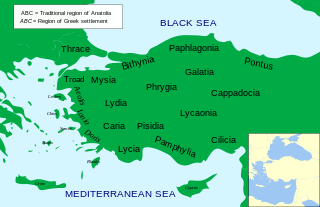
Classical Anatolia is Anatolia during Classical Antiquity. Early in that period, Anatolia was divided into several Iron Age kingdoms, most notably Lydia in the west, Phrygia in the center and Urartu in the east. Anatolia fell under Achaemenid Persian rule c. 550 BC. In the aftermath of the Greco-Persian Wars, all of Anatolia remained under Persian control except for the Aegean coast, which was incorporated in the Delian League in the 470s BC. Alexander the Great finally wrested control of the whole region from Persia in the 330s BC. After Alexander's death, his conquests were split amongst several of his trusted generals, but were under constant threat of invasion from both the Gauls and other powerful rulers in Pergamon, Pontus, and Egypt.

Artashat, Hellenized as Artaxata and Artaxiasata (Ἀρταξιάσατα), was a major city and commercial center of ancient Armenia which served as the capital of the Kingdom of Armenia from its founding in 176 BC to 120 AD, with some interruptions. It was founded during reign of King Artaxias I (Artashes), the founder of the Artaxiad dynasty. Its ruins are located in the Ararat Province of modern-day Armenia, on the left bank of the Araks River, at the site of the monastery of Khor Virap. It was destroyed and rebuilt several times from the 1st to the 5th centuries AD, before finally being abandoned.
The Fimbrian or Valerian legions were two Roman legions which served and fought in all three wars against King Mithridates of Pontus, one of the Roman Republic's chief adversaries during the 80s, 70s and 60s BC. They became a body of long serving legionaries known for their fierce fighting reputation and also, more infamously, for mutiny and abandoning their commander. The legions take their name from the consul Lucius Valerius Flaccus, who first recruited them in 86 BC, and from his subordinate, Gaius Flavius Fimbria, who took command of the legions after inciting a mutiny and murdering Flaccus.

Tigranes the Younger was an Artaxiad prince, who briefly ruled the Kingdom of Sophene in 65 BC.












